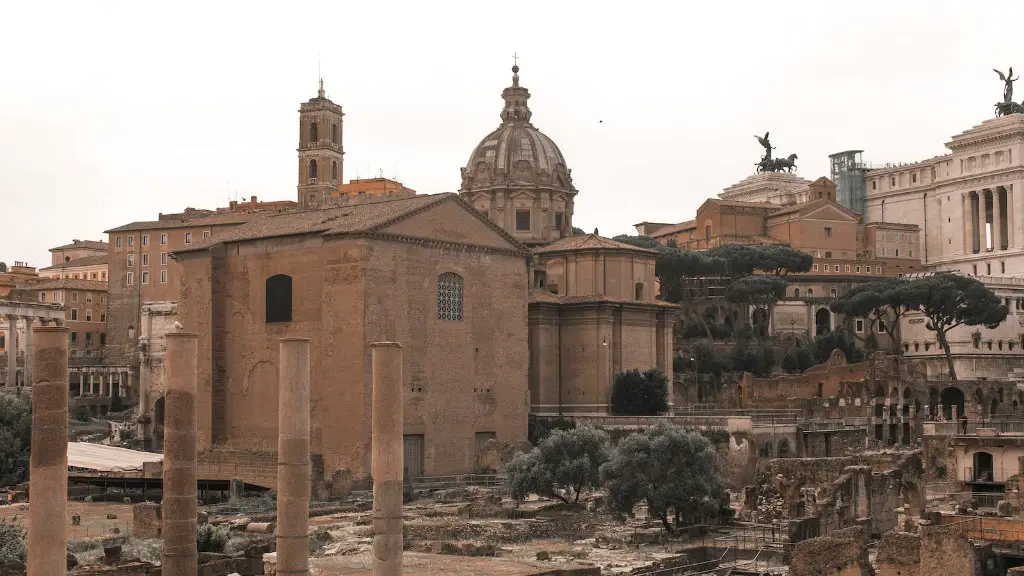Province was the name given to the large territorial divisions of the Roman Empire. Provinces were divided into two types, senatorial and imperial. The senatorial provinces were those governed by a proconsul, who was an ex-consul or ex-praetor, while the imperial provinces were under the direct control of the emperor. Augustus divided the provinces of the empire into homogeneous units in order to better control them.
The word province can mean different things in different contexts, but in general, it refers to a large administrative division within a country or empire. In ancient Rome, a province was a territory that was governed by a proconsul, who was a kind of military governor. Provinces were often divided into smaller units called civitates, which were essentially city-states.
Was ancient Rome a province?
The Roman provinces were the administrative regions of Ancient Rome outside Roman Italy that were controlled by the Romans under the Roman Republic and later the Roman Empire. Each province was ruled by a Roman appointed as governor. The provinces were divided into two types, the senatorial provinces and the imperial provinces. The senatorial provinces were ruled by a proconsul, while the imperial provinces were ruled by a legate of the emperor. The provinces were further divided into smaller units, called pagi.
The Roman provinces were foreign territories under permanent Roman administrative control. They were typically divided into two types: senatorial provinces and imperial provinces. The senatorial provinces were governed by a proconsul, while the imperial provinces were governed by a legate of the emperor. The provinces served as a source of revenue and manpower for the Roman state, and were also a means of extending Roman influence and control throughout the empire.
What is the state or Province of Rome
Rome is one of the oldest continuously occupied cities in the world. It was founded as a small village in the 9th century BCE. Since then, it has grown to become one of the largest and most influential cities in the world.
Rome is a major tourist destination. It is home to some of the most famous historical landmarks in the world, such as the Colosseum, the Pantheon, and the Vatican City. It is also a major cultural center, with countless museums, art galleries, and theaters.
The Roman Catholic Church is headquartered in Rome, and the city is also home to a significant Jewish community.
Rome is a vibrant and exciting city, with something to offer everyone.
Roman provinces were established as a means of generating revenue for the empire. They were administered by governors who were responsible for collecting taxes and maintaining order. Provinces varied in size and importance, and some were divided into smaller units called pagi.
Is Rome a city or province?
Rome is one of the oldest continuously inhabited cities in the world. It is referred to as “The Eternal City”, “Roma Aeterna”, and “The City of the Seven Hills”. Rome is the largest city in the country of Italy and is located in the central-western portion of the Italian Peninsula, on the Tiber River within the Lazio region of Italy. The Vatican City, which is an independent country within the city of Rome, is the smallest country in the world by both land area and population.
Sicily was the first province acquired by the Roman Republic, encompassing the island of Sicily. The western part of the island was brought under Roman control in 241 BC at the conclusion of the First Punic War with Carthage.
What were the provinces of the Roman Empire?
At the height of the Roman Empire, there were 38 provinces divided between two types of governors: those who were appointed by the Senate and those who were appointed by the Emperor. The provinces were also divided between two types: those that were considered part of the Roman Empire and those that were not. The provinces that were considered part of the Empire were governed by imperial legates, while those that were not were governed by praetorian prefects.
The provinces of Hispania, Gallia, and Raetia were eventually conquered by the Roman Empire and became part of the provinces of Hispania Baetica, Hispania Lusitania, Hispania Tarraconensis, Gallia Narbonensis, Gallia Aquitania, Gallia Lugdunensis, Gallia Belgica, Raetia, Noricum, Germania Superior, Germania Inferior, and Britannia.
What are the provinces of Italy
There is no one perfect way to learn something new. Some people prefer to read about it, some prefer to listen to audio recordings, and others prefer to watch videos. The best way to learn something new is to try a few different methods and see which one works best for you.
The number of provinces in the Roman Empire changed over time as territories were gained or lost, and as larger provinces were divided into smaller ones. Under the reign of Trajan (98-117), there were 46 provinces in the empire. By the reign of Diocletian (285-305), the number of provinces had increased to 96.
Was Italy a province in Roman Empire?
The Roman Empire was an international political system in which Italy was only a part, though an important part. When the empire fell, a series of barbarian kingdoms initially ruled the peninsula, but, after the Lombard invasion of 568–569, an Integrated Kingdom of Italy was established by the Lombards.
Greece was a key province of the Roman Empire, as the Roman culture had long been in fact Greco-Roman. The province was especially important to the Empire for its strategic location and its many resources.
How did provinces affect Roman economy
The Roman provinces were integral to the Roman economy as they provided access to raw materials and were the main distribution centres for units of production. These resources made Rome possible and allowed it to expand without being beholden to another nation. Rome could simply arrange the logistics and operating procedures and the resources would be available.
As of 2019, there are 107 second-level institutional bodies in Italy, including 80 regular provinces, 2 autonomous provinces, 4 regional entities for decentralization, 6 free municipal consortia, and 14 metropolitan cities. The Aosta Valley region also has the powers of a province.
What is the city of Rome called?
Rome is one of the oldest and most beautifully preserved cities in the world. Its rich history and stunning architecture draws tourists from all over the globe. From the Colosseum to the Sistine Chapel, there is no shortage of things to see and do in Rome. No matter how many times you visit, there always seems to be something new to discover. It’s no wonder why Rome is known as the Eternal City.
Ancient Rome was one of the most powerful empires of its time. It grew from a small city-state on the Italian Peninsula to a massive empire that spanned the Mediterranean. Ancient Rome was known for its military might, engineering feats, and architecture, as well as its art, literature, and philosophy.
Conclusion
A province in ancient Rome was a territorial unit under the jurisdiction of a consular legate or a praetorian prefect. Provinces were divided into two categories: praetorian provinces and consular provinces. The praetorian prefectures were the largest, and were under the direct control of the Emperor. The consular provinces were supervised by a governor who held the rank of consul.
Province in ancient Rome referred to a territory that was governed by an official who was appointed by the Senate. The official was responsible for maintaining order and administering justice. The provinces were divided into two categories: senatorial provinces and imperial provinces. Senatorial provinces were those that were under the direct control of the Senate, while imperial provinces were those that were under the direct control of the emperor.





